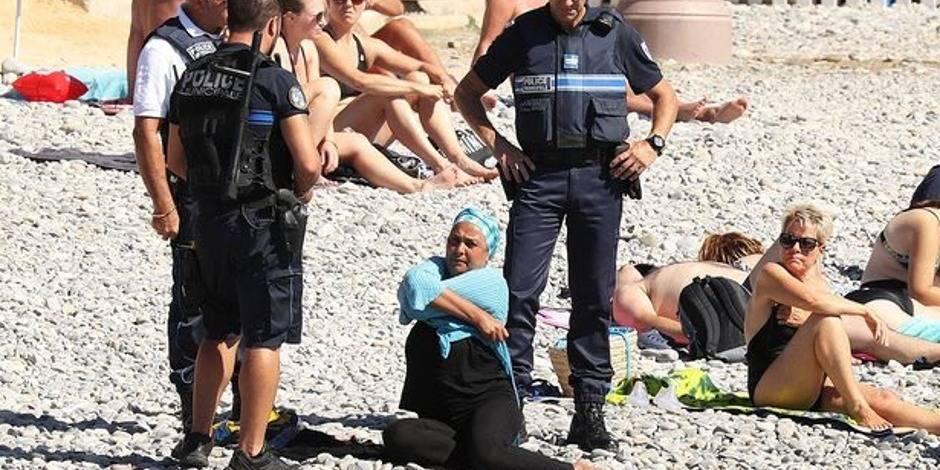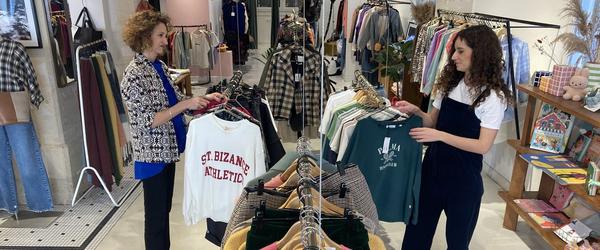Where are unsold clothes go?
Au début du mois de janvier, le New York Times a révélé une pratique peu charitable de certains magasins H&M, qui préféraient lacérer leurs invendus et les jeter à la poubelle plutôt que de les donner à des organismes de charité.A week later, we learned that New York City shred and cremated new clothes seized in the fight against counterfeiting.But then, how do things go here?
Publié le 12 févr. 2010Ève Dumas LA PRESSEIf Quebec chains seem to have a rather developed social and environmental conscience, the great American and European channels installed with us do not prevent themselves from continuing their questionable practices.On Anabelle Nicoud's Mode blog (Cyberpresse), two readers confirmed what was written in the New York Times.
"I remember having spent an entire afternoon tearing hundreds of summer dresses with the only reason that a strictly decorative detail had not been executed well.Nothing that bothers the clothing of clothing.I told myself that these dresses could easily end up in an "outlet" or be given to an organization.Instead, I had to fill dozens of green bags.It discouraged me a little to see all this waste.If only the textiles had been reused, "wrote Mimidiamant.
Élise Pedneault, une enseignante jointe par courriel à la suite de son commentaire sur le blogue, a affirmé pour sa part qu'une vendeuse du H&M du centre Rockland lui avait dit, tandis qu'elles attendaient toutes deux en file pour acheter des articles de la collection Jimmy Choo, que les invendus des collaborations avec les designers étaient détruits.
On other blogs, we can also read several comments about the Anthropology channel (which opened a shop in Toronto, but is not yet present in Quebec).Employees would be responsible for destroying several of his unsold, even furniture.The reason?Brand integrity.We don't want to see homeless with anthropology clothes on the back.
Quebec channels

Research done within the framework of this article tends to show that Quebec companies have rather charitable practices.Take Jacob, for example, who attacks the problem of surplus at the source.
"For the past two years, we have been more severe with the quantities produced, which saves us from being taken with a lot of unsold," explains Cristelle Basmaji, director of communications at Jacob.At the end of the season, we sell the goods.When there is no more room in the store, we send it to the distribution centers, where we choose what can be placed in the Jacob Outlet.The too obsolete or slightly damaged goods is given to the Renaissance body and to women's centers.In 2009, we gave around 18,000 clothes, for a market value of $ 650,000.We cut the labels, to prevent people from buying lots and resell.At Christmas, we gave a large amount of scarves to the Salvation Army.We do not throw anything.»»»»
Pierre Legault, director general of Renaissance, confirms."It has been three years since Jacob sends us trucks full of clothes.It enhances our offer to customers.Aubainery also gives us its surplus.There are almost ever discharges, but tired, torn or unsold clothes are recycled.Cotton is transformed into wiping rags for garages.There is also a company that buys us from the books to make felts for the automotive industry.We are therefore the second of the three R (reduce, reuse, recycle).We ask people to give us what is reusable and not what will go directly to recycling.»»»»
Renaissance will also open a liquidation center shortly.
A call to the offices of the chain The castle also tells us that unsold items are transported to warehouse stores and sold for the year.We can even find goods dating from ten years, if not more.The pieces that are slightly damaged are given to charity organizations.
At Simons, we receive a similar answer.All the clothes that remain after the sales are given to a charity work in Quebec.This declaration is confirmed by an employee of Simons in Quebec, who prefers to keep anonymity.Last summer, she found herself in a sale of confidential church basement where she recognized pieces of designers (like a Michael Kors dress) sold at $ 5 and less.The labels were cut, of course."These secret sales are very popular. Il y a même des gens qui dorment là la veille pour avoir le premier choix»»»», nous a-t-elle raconté.
The surplus sometimes make Chantal Crépeau, owner of Bébé Boomerang, at Lac Beauport.After the holidays, for example, his shop-friperie seemed empty.She therefore asked her representatives to find her stock.One of them gave him a lot of 1000 songs at $ 10 per part, from a collection dating back to 2006.
The merchandise who does not find takers after a while, she sends it to a resourcery, then to the Salvation Army. «J'essaie d'abord de donner localement»»»», dit-elle.He also happened to send summer clothes to Guatemala.These clothes had been well sorted not to send unnecessary goods and transform a donation into "dumping"»»».No, the helpless of hot countries generally do not need winter coats!








